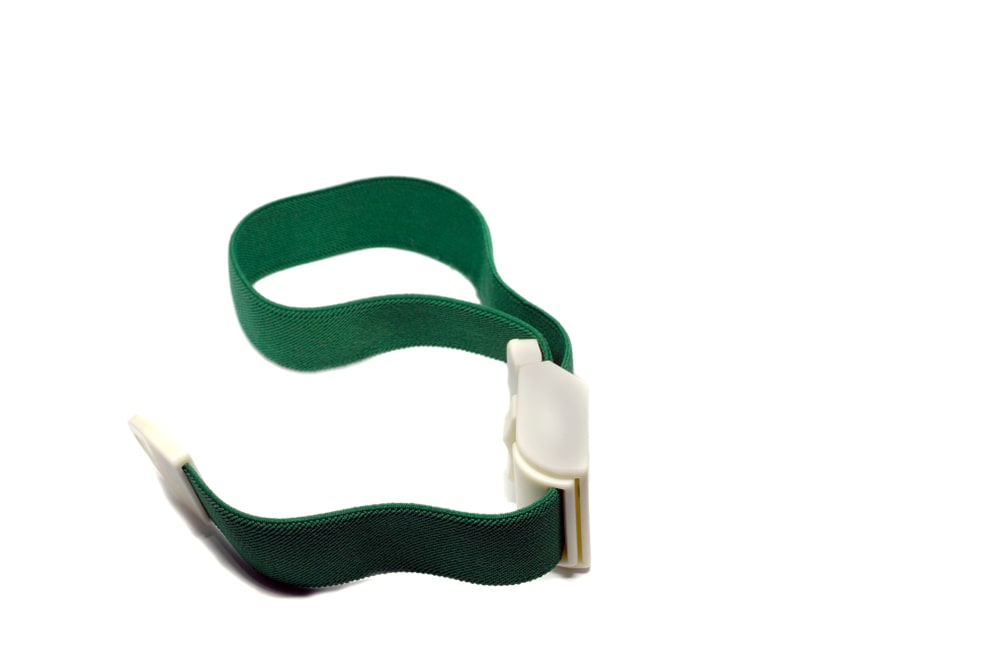There are several different ways to achieve blood flow restriction, however, for the sake of this blog post, we will be specifically talking about the Delfi PTS (personalized tourniquet systems) as it is one of few systems that monitor occlusion in real-time and has been certified by the FDA—being able to monitor occlusion precisely during exercise elevates the BFR experience well above BFR treatments that simply rely on elastic bands for occlusion.
What is BFR?
As the name suggests, BFR is a process of restricting, or occluding, the vasculature of a limb by using a pneumatic tourniquet—something similar to a blood pressure cuff. To start, cuff size is selected and synched around the target limb, usually proximally (nearest to the shoulder or hip rather than further down the limb), then calibrated to a user’s specific occlusion pressures; each and every time it is used. Once calibrated the cuff is inflated to a percentage of the users maximum occlusion, precise occlusion is important for safety and to achieve optimum results by partially restrict the arterial blood flow to the limb/muscles while also fully occluding the blood flow returning from the limb to the heart (venous return)3. After a prescribed bout of reps and sets are completed the cuff deflates. This process results in blood pooling, a feeling of “muscle pump,” creating a hypoxic environment in the muscles below the cuff, which is then further enhanced with muscle contractions. It is worth noting that reducing blood flow to a limb for therapeutic treatment is not a new concept, as it has been practiced in Japan for over 40 years, known as “Kaatsu” training2.
Why restrict blood flow?
By restricting blood flow, we can create a hypoxic environment, enhancing metabolic demand in a muscle or a group of muscles, therefore, accelerating the mechanisms for hypertrophy (increase in size) of cellular structures in the muscles. Increased muscle size, in particular, due to increased cellular structures in the muscle is beneficial for maintaining muscle size, strength and endurance, which has added benefits for maintaining or improving joint health. Additionally, accelerating the hypoxic effects in a muscle speeds up the fatigue process. When muscles begin to fatigue the nervous system recruits more muscle fibres to complete a task. This leads to greater recruitment of type 2 muscle fibres (fast-twitch fibres), which lead to quicker muscle endurance, hypertrophy and strength imrovements1.
So Who is BFR for?
It is worth noting that muscle hypertrophy and strength are not synonymous and that when developing strength there is no substitute for lifting heavy. However, in order to lift heavy, individuals need to be healthy. For someone with muscle or joint injuries—such as post-surgical, arthritic, ligamentous, tendonous or muscle pathologies—lifting heavy may not be an option. This is where BFR fits into physiotherapy treatment, by applying BFR with specific compression, exercises and parameters and we can help rehabilitate individuals who are not able to lift heavy, getting joints and muscles moving under tolerable loads while maintaining the benefits of higher intensity exercises, effectively speeding up the recovery process. It is worth noting that BFR can be used in a healthy population with all kinds of benefits, including joints/muscle maintenance, down-training periods, endurance training (mitochondria genesis), and more.
Are there any health risks?
As of the current research, no adverse side effects have been shown when BFR is used in healthy populations when administered by a trained physiotherapist. Any individuals who have a history of cardiovascular disease or other medical conditions are advised to consult their physician before using BFR, a process that can be guided by your physiotherapist.
References
Patterson, S. D., Hughes, L., Warmington, S., Burr, J., Scott, B. R., Owens, J., ... & Neto, G. R. (2019). B lood flow restriction exercise: considerations of methodology, application, and safety. Frontiers in physiology, 10, 533.
Sato, Y. (2005). The history and future of KAATSU training. International Journal of KAATSU Training Research, 1(1), 1-5.
Scott B. R., Loenneke J. P., Slattery K. M., Dascombe B. J. (2015). Exercise with blood flow restriction: an updated evidence-based approach for enhanced muscular development. Sports Med. 45 313–325. 10.1007/s40279-014-0288-1





